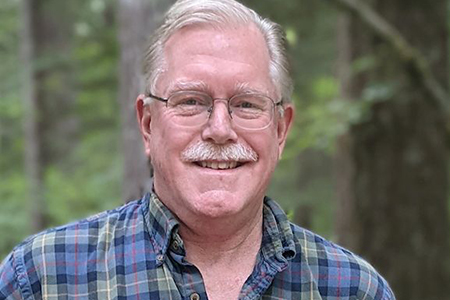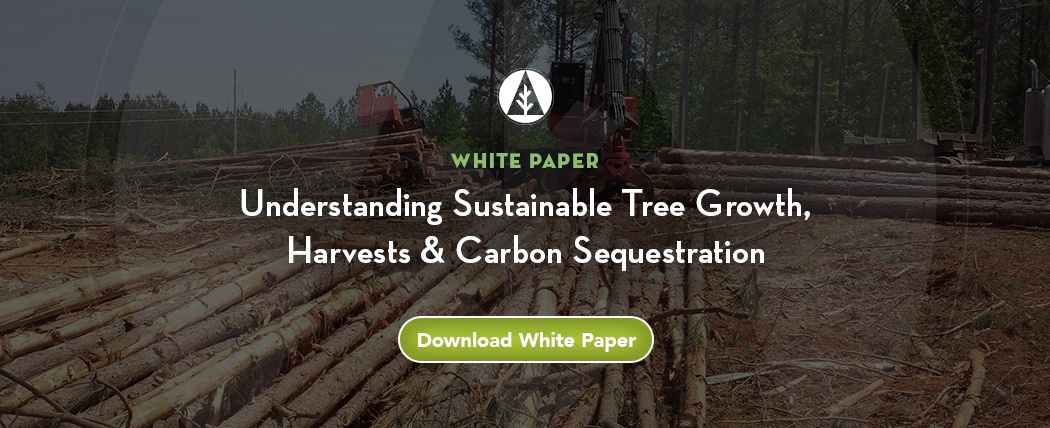
Protests over old-growth timber harvesting are nothing new in British Columbia (BC). As in Washington, Oregon, and California over the past four decades, protesters have held rallies, set up blockades, and otherwise done all they could to halt the cutting of large, old trees. In 1993, in the so-called War in the Woods, nearly 900 people were arrested during blockades designed to impede harvesting in the Clayoquot Sound area on Vancouver Island. It was, according to Wikipedia, “the largest act of civil disobedience in Canadian history until the 2021 Fairy Creek blockades.”
Protests against logging in the Fairy Creek watershed, near Port Renfrew on Vancouver Island, have gathered steam over the past two years. According to the Canadian Broadcasting Corp., 1,168 people were arrested between May and mid-November 2021. In October, about 100 protesters surrounded the BC legislature, hoping to persuade legislators to enact a ban on old-growth logging.

Officers with the Royal Canadian Mounted Police prepare to remove a protester from an elevated platform near Fairy Creek in British Columbia. According to the RCMP, 1,168 people were arrested between May 2021 and mid-November. Photo: RCMP.
The Rainforest Flying Squad, one of the groups that’s helped organize the protests, says it is “committed to protecting the last stands of globally significant ancient temperate rainforest on Vancouver Island.”
Teal Jones Group, which owns a 59,000-hectare Crown timber harvesting tenure in the Fairy Creek watershed, says its “activities in Tree Farm License 46 are responsible, consistent with all provincial regulations and engagement with local First Nations. Our work in the area supports hundreds of good jobs while providing the materials needed for numerous products we all rely on every day.”
On November 2, the BC Ministry of Forests, Lands, Natural Resource Operations and Rural Development announced that it would “work in partnership with First Nations to defer harvest of ancient, rare, and priority large stands of old growth within 2.6 million hectares of BC’s most at-risk old-growth forests.”
“Forests are a part of who we are as British Columbians. We have a responsibility to ensure the benefits are shared, today and with future generations,” said BC Premier John Horgan via a press release. “Following the recommendations of the Old-Growth Strategic Review [OGSR], we are taking steps to fundamentally transform the way we manage our old-growth forests, lands, and resources.”
The review, entitled A New Future for Old Forests: A Strategic Review of How British Columbia Manages for Old Forests within Its Ancient Ecosystems,” was commissioned by the BC provincial government. Al Gorley and Garry Merkel, both BC registered professional foresters (RPFs), led a five-member Old-Growth Technical Advisory Panel that produced the report. The authors offer 14 recommendations (see Figure 1).
“Our ever-expanding understanding of forest behavior and management, as well as the effects of climate change, have made it clear that we can no longer continue to harvest timber and manage forests using the approaches we have in the past while also conserving the forest values we cherish,” write Gorley and Merkel. “We therefore have to be honest with ourselves and collectively and transparently make the difficult choices necessary to ensure future generations of British Columbians can enjoy and benefit from our magnificent forests, as we have done.”
Reaction to the old-growth harvest deferral was swift.
Ancient Forest Alliance: “Today’s announcement is a historic step in the right direction, but there are some critical pieces still missing,” said AFA campaigner Andrea Inness. “Besides a lack of funding, the province has failed to provide timeframes or deadlines for the implementation of deferrals or any of the OGSR recommendations. Meanwhile, at-risk old-growth forests are being left on the chopping block while negotiations take place.”
The alliance urged “the BC government to commit several hundred million dollars in conservation financing to match this federal funding in the upcoming spring budget.”
BC First Nations Forestry Council: “First Nations have been given 30 days to review and respond to the proposed old-growth deferrals within their territories. Nations are being brought into this process after-the-fact, and now the Province is asking Nations to hurry up and respond. Although some Nations may have the resources, capacity, and government-to-government (G2G) tables that support joint decisionmaking and may be ready to move quickly, many Nations don’t and will not be ready to make those decisions. Thirty days to respond is trying to rush Nations into making decisions that once again in no way supports an informed and meaningful consultation process.”
Truck Loggers Association: “This announcement sends the message to the multi-generations of BC’s born and raised forestry workers who have dedicated their lives to running independent, innovative small and medium-sized business that continue to reinvest in BC and support a sustainable industry that they are not a priority to this government. Government appears to have completely ignored that they provide tens of thousands of jobs and billions of dollars in economic activity and revenues to help fund healthcare and education to 140 communities in this province.”
BC Council of Forest Industries (COFI): “While we are still digesting the details, our initial analysis indicates that these deferrals would result in the closure of between 14 and 20 sawmills in BC, along with two pulp mills and an undetermined number of value-added manufacturing facilities. This represents approximately 18,000 good, family-supporting jobs lost, along with over $400 million in lost revenues to government each year—revenues that help pay for healthcare, education, and other services British Columbians count on.”
According to the BC government’s analysis, up to 4,500 forestry jobs could be lost. See the province’s New Vision for BC Forests and Old-Growth Forests web pages.
Two other recent reports offer dramatically different data and analyses about old-growth forests in the province.
- BC’s Old Growth Forest: A Last Stand for Biodiversity, by Veridian Ecological Consulting, a Nelson, BC firm. The authors of the report, released in April 2020, calculate that the provincial total area of old forest is about 13.2 million hectares, but calculate that “Sites with the potential to grow very large trees cover less than 3% of the province. Old forests on these sites have dwindled considerably due to intense harvest so that only 2.7% of this 3% is currently old. These ecosystems are effectively the white rhino of old-growth forests. They are almost extinguished and will not recover from logging.” They recommend sharp reductions on old-growth harvesting.
- Status of BC’s Old Forests: THE SITUATION IN 2021, by Forsite Consultants, an integrated forest management company; the report was commissioned by COFI. “As of early 2021, BC’s 55.4 million ha of provincial and federal forested lands contained 11.4 million ha of old forest. This represents 21% of the Crown forested land base existing as old forests, with approximately 29% (3.3 million ha) of these old forests growing on sites with an expected productivity (site index) of > 20m. It is recognized that using SI > 20 to denote good growing sites in the province is a vast simplification of reality, as SI 20 would be considered lower productivity in some ecosystems (portions of the coast) and high in others (dry interior), but is used here only to provide a comparable number to past reporting that suggested only 3% of BC’s old forests were on sites capable of growing big trees.”
John Innes, dean of University of British Columbia, offers his perspective here. An excerpt:
As with many issues and causes reported in the media, the situation with old-growth conservation in British Columbia is a lot more complex than most people suppose. There has been a great deal of obfuscation, to the extent that the facts are quite difficult to ascertain. For example, it has been stated that that there is only 3% of old-growth left in the province of British Columbia. This is untrue. As defined by the provincial government (and there should be questions being asked about the scientific validity of this definition), there is somewhere between 13 and 14 million hectares of old-growth left in British Columbia. About 10 million ha of this is either protected or excluded from the Timber Harvesting Land Base (THLB) because it is not considered to be economically feasible to harvest. Much of this forest (an estimated 80%) consists of relatively small, low-productivity forest, but which nevertheless provides many environmental benefits, including important habitat for many species and a significant carbon store.
Tenure Reform
Of the more than 55 million hectares of forestland in BC, about 95 percent is publicly owned. The BC government authorizes the rights to harvest Crown timber through forest tenures in the form of agreements, licenses, and permits, each if which is a legally binding contract that provides the contract holder with specific rights to harvest public timber in exchange for meeting government forest-management objectives.
In November, the Provincial government introduced Forest Amendment Act 2021 legislation “to help build a more diverse and inclusive forest sector that works for people” and “will ensure local communities, First Nations, and smaller companies have more opportunities in the forest sector, establish a fair framework for compensation regarding changes to harvesting rights, and enhance government’s ability to manage timber harvesting in the public interest.”
The province has established a commission to “provide advice on strengthening the long-term stability of jobs and economic recovery in BC’s forestry industry.”
Steve Wilent is Editor of Natural Resources Management Today, a monthly digital newsletter for North American natural resources professionals who manage fish, forests, range, water, wildlife, and other resources, as well as for the people who depend on or enjoy these resources.


 Steve Wilent
Steve Wilent



